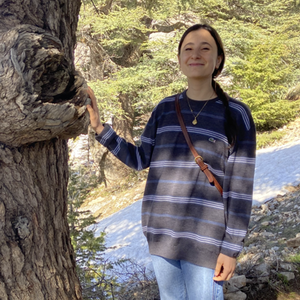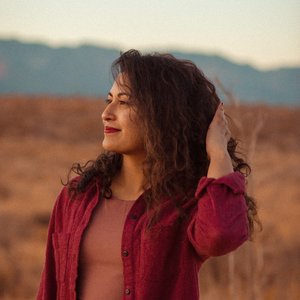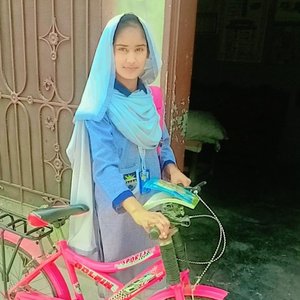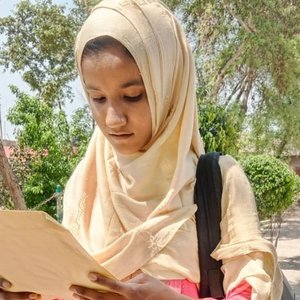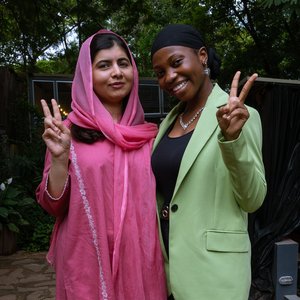The 17-year-old Slovakian scientist who helped develop a COVID-19 test
(Courtesy of Zuzana Hudáčová)
Zuzana Hudáčová shares what it was like to fight the pandemic from her lab.
To break into STEM, Zuzana Hudáčová had to learn to break the rules.
An avid science student from an early age, Zuzana decided at 14 that she had learned all she could from textbooks and it was time to try her talents out in the lab. She started applying to internships but ended up getting rejected from more positions than she could count because of her age. “I was 14 — nobody saw me as a competent person,” Zuzana explains. Older scientists weren’t used to delegating responsibilities to young people like her. “They think: ‘Everything will go wrong. You'll be a burden.’ That's how they saw me; that's how they still see people my age.”
Zuzana refused to give up and began reaching out to individual scientists to see if they’d be willing to hire her as an intern. Eventually she found an open mind in Dr. Dáša Bohačiaková, an embryologist in the Czech Republic, who agreed to take her. “When I heard the news I was so happy that I cried,” Zuzana remembers. “I didn’t know the concept of crying from happiness existed until then.” That summer Zuzana studied the formation of different nervous tissues and learned how scientists use stem cell research to develop treatments for various disorders. As soon as Zuzana completed her internship, Dr. Bohačiaková hired her again for the following year.
(Courtesy of Zuzana Hudáčová)
These summers in the Czech Republic were formative for Zuzana who had only ever seen scientists in movies. “The reality was actually even better than I imagined,” she remembers. “Scientists are cool. Scientists wear lab coats. Scientists save the world.” What Zuzana didn’t expect — what the movies hadn’t shown her — was how slow-moving the research process could be. “It takes years, decades, sometimes even centuries for scientists to come up with something impactful,” Zuzana explains. “It’s a process not only of intellect but of diligence and persistence. I became a much more patient individual thanks to science.”
Working in Dr. Bohačiaková’s lab helped Zuzana become a better scientist. But it also taught her some difficult lessons about succeeding as a young woman in her field. When she began her internship, Zuzana says her confidence faltered. “I had this feeling of, ‘Do I deserve this?’ I felt like I wasn’t good enough,” she remembers. “It was imposter syndrome.” To Zuzana, these doubts felt like the byproduct of a culture that had taught her to feel inadequate because of her gender. “I knew that I wouldn’t be having these thoughts if I was a boy,” she says. “If I was a boy I’d be like, ‘Yes, I earned this. And I’m going to go for it.’”
Around the world, women account for a minority of STEM researchers. Zuzana says her experience reflects this gap. Though the labs where she worked employed female scientists, there was never a woman at the helm: “I don’t meet a lot of scientific female leaders, even though I’ve met many women who are just as capable as the men on top.” Zuzana believes the problem is not women’s abilities but rather social norms that discourage girls from aspiring to leadership in their fields. “Girls are often told that they’re hardworking, but they’re never told that they’re brilliant or genius,” she explains. “Because girls don’t feel like they have these superior qualities, we rarely develop enough confidence to actually want to become leaders.” To close the gap, Zuzana shares, we have to change the way we talk about female achievement so that girls can grow up to see themselves as leaders. “We should call women brilliant,” Zuzana says. “We should call them geniuses, because they are. They really are.”
“Girls are often told that they’re hardworking, but they’re never told that they’re brilliant or genius. Because girls don’t feel like they have these superior qualities, we rarely develop enough confidence to actually want to become leaders.”
Three years have passed since Zuzana worked in Dr. Bohačiaková’s lab. She’s 17 years old now, a rising senior at a boarding school in Scotland where she spends her free time “singing terribly” with her friends and re-creating animal noises for fun. “If you find someone staring at a computer listening to animal sounds and trying to replicate them, that’s probably me in my boarding house,” she says, grinning. She’s also the natural sciences editor of Young Global Scholars, a student-run journal that publishes work from high schoolers around the world.
When the COVID-19 pandemic began in March 2020, Zuzana evacuated her boarding house in Scotland and returned to Slovakia to finish her school year online. As the crisis worsened, Zuzana says she felt a responsibility as a scientist to help her country cope. “I knew that Slovakia would not be in a very good position when the virus hit,” Zuzana explains. “We’re not well-off economically, and don’t have the resources to fight a pandemic.”
Determined to make a difference, Zuzana reached out to the CEO of MultiplexDX, an international company based in Slovakia that was working to develop diagnostic tests for COVID-19. She joined the company for the summer as the youngest research intern in their lab — an experience Zuzana says caused her insecurities to resurface: “I still felt like: Do I really deserve to be here? Am I qualified enough? Will I be useful?” But this time, the stakes were too high for self-doubt. “At the end of the day, he chose me to be on the team,” Zuzana remembers telling herself. “There must be something about me that he believes in. And if he believes in it, I should believe in it too.”
(Courtesy of Zuzana Hudáčová)
So Zuzana moved into a flat in Bratislava, the capital and largest city of Slovakia. She lived alone during her internship, commuting an hour each way to the lab where she worked with a team of scientists to develop diagnostics for COVID-19. “The team I worked on was developing LAMP-based diagnostics which — similar to PCR tests — use genetic information to detect the virus,” she shares. “But LAMP is way quicker and cheaper than PCR, and we were trying to make it not only quick but also very sensitive.”
In Zuzana’s first few weeks at the lab she mainly worked on teams where older scientists could supervise her work. But eventually she received a project of her own, experimenting with an unconventional approach to COVID-19 detection. “The method I tested was based on a colorimetric principle, which is basically diagnostics based on color change,” Zuzana explains. “It was a really innovative and brave approach — nobody thought that it would work.” The hours were long, but her efforts paid off when the colorimetric method she was testing made it into MultiplexDX’s final diagnostics kit. “I was really, really proud,” Zuzana shares. “Knowing that you played a crucial role in a discovery is a special experience.”
“Science for me is more than an interest, it’s an essential part of my identity.”
Of her many accomplishments, Zuzana is most proud of the person she’s grown into — the person science helped her become. “Science for me is more than an interest, it’s an essential part of my identity,” Zuzana shares. “I went from being a shy girl afraid to get a B in school to a girl that is the exact opposite of that. Now I’m far from shy, and there’s virtually no rule I would not question.” For Zuzana, this rebellious spirit and disregard for norms were key to breaking down the barriers that hold girls back in STEM. “My advice to girls in science is to follow your intuition, not the rules,” Zuzana says. “Rules will not lead you anywhere. Don’t let conventions and norms tell you how to define yourself — or what’s attainable for someone like you.”
 Read more
Read more








